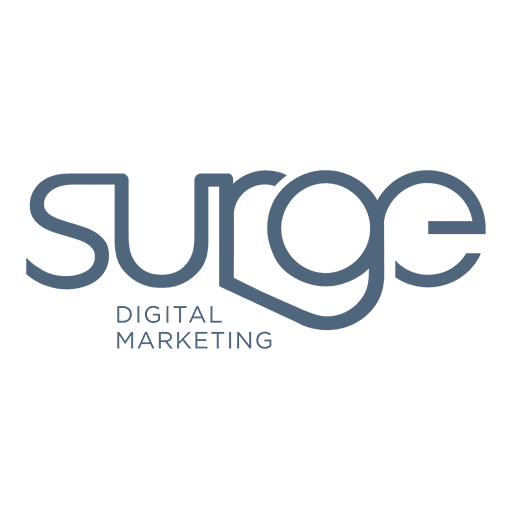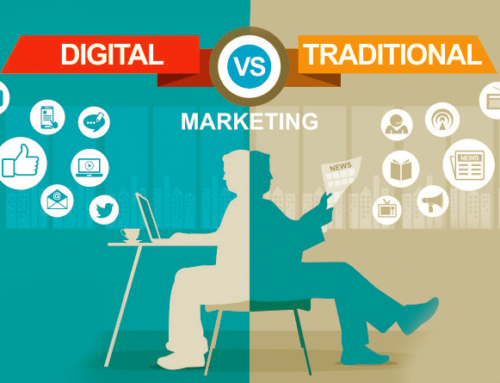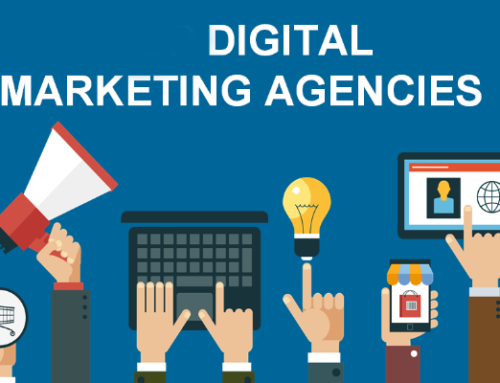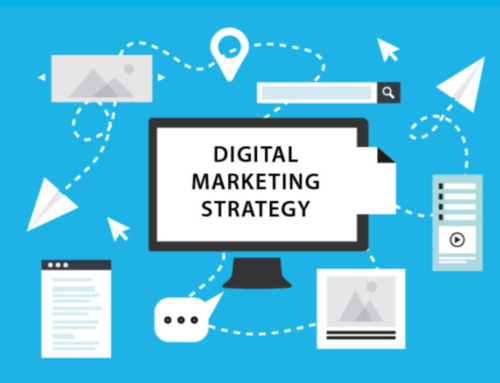Preparation is key. Abraham Lincoln once said, “Give me six hours to chop down a tree and I will spend the first four sharpening the axe.” Whether you are chopping down a tree or executing an integrated marketing plan, the steps you take ahead of time to lay out your plan and ensure you have all of the proper (and optimized) tools, are crucial to your marketing success.
LIMITED TIME OFFER – GET A FREE 30-MINUTE STRATEGY SESSION
Your marketing department might encompass digital marketing, print advertisement, ppc management, website optimization, visual identity/branding, event marketing, etc. As a digital marketing agency, this marketing plan discussion will focus mostly on the digital marketing aspect, but the strategies and concepts in this post can be expanded to encompass your entire marketing department. For today’s marketers, creating an integrated marketing plan that includes social media marketing, content marketing, email marketing and SEO — all tenets of a strong digital marketing, or digital marketing strategy — is necessary in order to attract and convert buyers in a digital age.
DOWNLOAD THE SURGE DIGITAL ‘5 Ways to Grow Your Business in 90 Days’ EBOOK
Maybe you work for a large corporation and have been tasked with developing next year’s online marketing strategy, or perhaps you are launching a new start-up and need to craft a plan from scratch. Maybe it’s been 20 years since you graduated from business school or wrote your last marketing plan, and realize that times have changed. Whatever the case, the steps you take today to create a functional and straight forward marketing plan will lay the foundation for your year ahead, helping you to get results that are measurable and quantifiable.
But before we dive in, let’s take a quick look at an overview of how the internet marketing strategy should be structured.
HOW TO STRUCTURE YOUR DIGITAL MARKETING STRATEGY
LIST YOUR GOALS FIRST
While developing goals may not be the first step you actually take when drafting your online marketing plan, listing them first on your final digital marketing stragtedy document sets the stage for everything to come.
EXPLAIN YOUR RESEARCH
Research will be the foundation of your strategy and should include:
- Competitive Analysis
- SWOT Analysis – This is an analysis of your company’s strengths, weaknesses, opportunities and threats, standard to any business or marketing plan.
- Understanding Your Buyer Personas – This will include the demographics of the buyers you are targeting as well as include any personas you want to avoid.
- Learning Your Buyers’ Buying Cycle – Understanding how, when, where and why your target market buys is key to converting leads.
EXPLAIN YOUR STRATEGY
Once you have a clear grip on the landscape and understand your buyers, it’s time to explain the strategy. This phase includes:
- Defining Your Goals
- Knowing Your USP (unique selling proposition)
- Ensuring You Have a Strong Brand
- Making Sure You Have an Optimized Website
- Creating Kick-Ass Content
- Defining Your Distribution Channels (email, social, etc.)
- Having an SEO Strategy
DEFINE KPIS AND MEASUREMENT METHODS
After all the heavy lifting is complete, your strategy is in place and you have begun pulling together and implementing your tactical plans, it’s time to measure. In fact, even before you have implemented your strategy you should be measuring to establish your baseline. What have you done in the past and what were the results? How can those strategies shift to improve ROI? Measurement should be done before, during and after — throughout the year, on a monthly or even weekly basis — to ensure your plans are showing positive results and to shift them if they’re not.
LIST OVERARCHING STRATEGY AND TACTICAL PLANS
Having tactical plans and calendars gives life to your ideas and strategy. Try focusing on 4 or 5 main tactics for the year and create execution plans around these tactics. Keep in mind that your tactics may or may not be the same as your goals. If your goals are high-level, i.e. to increase traffic by 50%, then your tactic would drill down more on how to get that result — and be as the name implies, more tactical.
IT’S A GUIDE, NOT A BIBLE
Nobody can predict the future, which is why it is vital to remember that your marketing plan should be a living, working document. This is not a style book, a brand handbook or a book on company policy. A marketing plan should be a reference that is used throughout the year, is malleable to a certain extent and is shared with all stakeholders and contributing members of the team. Transparency is important when developing and finalizing the plan. By getting feedback from all departments and being clear on goals, your marketing strategy is more likely to be of value and to be seen as a successful tool.
A marketing plan left to collect dust is useless. What’s not useless is a fluid marketing plan that allows for change and is looked upon as a guide, not as a bible.
DO YOUR RESEARCH
A common mistake that many make is starting on the tactical plan before they have ironed out the strategic plan. In order to formulate a strategic plan, you need to do research.
If you don’t know who you are, what you’re selling or who you’re selling to, you’re going to have a pretty hard time convincing people to buy your product or service, never mind figuring out what tactical initiatives you should be working on. So, if you haven’t already, do your homework. Start with researching your competitors and audience; examine your customers’ buying habits; and do a SWOT analysis (more on that in a bit). These steps will help you lay a sturdy foundation for your tactical plans and allow you to develop reasonable expectations and goals.
FEEL OUT THE COMPETITION
In order to determine the likelihood of success and define your marketing strategy, you need to understand the competition. Researching your competition first will also help you through your next step of creating a SWOT analysis.
In the new world of digital marketing there are a handful of strategies that are paramount. These strategies can also be useful when researching competitors. Using email and social media, and surveying the content landscape, will give you an immense amount of knowledge about your competition. Here are some quick tips on understanding who you’re up against:
- Subscribe to your competitors’ (or those you perceive to be your competitors) email lists.
- Follow your competitors on Twitter, Facebook, LinkedIn, Instagram… any social site you can find them on.
- Examine what content your competitors are creating — who it is aimed at, how often is it produced, who is writing it, what the content topics are, etc.
For more on why these tactics are important, how to implement them and what data you can glean from them, read Competitor Research in an Inbound Marketing World.
PERFORM A SWOT ANALYSIS
Standard to any business or marketing plan is the SWOT analysis. The SWOT analysis should help you clearly define your strengths, weaknesses, opportunities and threats so that you can develop goals and objectives that are on point and tied to your overall mission. The SWOT analysis will also enable you to understand what differentiates you from your competition and how you should position yourself in the market. It will also help in developing your messaging and your unique selling proposition. Brutal honesty is imperative to a truly insightful SWOT. Use bullets and aim for 4–5 in each section. Limiting your lists will help you to focus on the most critical points and help retain focus.
In addition to completing a SWOT for your overall marketing plan, it is often helpful to do a SWOT analysis for the different segments within your marketing plan. For example, as we will discuss further down in this piece, content marketing, social media and SEO will all be important parts of your overall digital marketing plan and would benefit from SWOTs of their own.
CREATE YOUR BUYER PERSONAS
The days of outbound marketing have come and gone. No longer are we looking at audiences en masse. Instead, digital marketers are honing in on the segments of those audiences that they want to target. This is a crucial step in developing a digital marketing plan.
Creating buyer personas, in order to understand your target market, will let you see who you are marketing to, what their pain points are, where they live online and a number of other demographic traits. This information will help you to personalize your marketing materials so they are targeted and highly relevant to your audience segments.
Read How to Avoid 4 Buyer Persona Mistakes for advice and a free template on developing your personas. You may need to do research in order to completely develop your personas, but before you dive into that endeavor, check out 20 Questions To Ask When Creating Buyer Personas. You may find you already have all the data you need!
And remember, you aren’t trying to catch every fish in the sea. You are only trying to catch the ones you want, the ones you are targeting because they have the strongest potential to turn into leads. Your net doesn’t need to be wide — it needs to be precise.
LEARN YOUR BUYERS’ BUYING CYCLE
After you have identified your buyer personas, the next step is figuring out how these personas think and ultimately make the decision to buy. According to Hubspot and adopted by all those who believe in the inbound marketing methodology, there are three steps in the buyer’s journey: Awareness, Consideration, Decision. Each of these stages are major opportunities for you as a marketer to nurture your potential customer by providing valuable content about the product and or problem they are trying to solve for. Here are three stats from a Forbes.com article that prove just how important content is in nurturing a prospect throughout the buyer’s journey:
- 70-90% of the buyer’s journey is complete prior to engaging a vendor (Forrester)
- A consumer engages with 11.4 pieces of content prior to making a purchase (Forrester)
- Consumers are 5x more dependent on content than they were 5 years ago (Nielsen)
CREATE A STRATEGY
Now that you’ve done your research, you’re ready to start formulating a marketing strategy for your plan.
WHITTLE DOWN YOUR GOALS
Goals are the most important part of your plan. If you have completed your research, you should have been able to identify your weaknesses and areas of opportunities. Setting both quantitative and qualitative goals around these findings, as well as developing KPIs, will be essential. They will help you to set a clear path, understand your marketing ROI and redirect your tactics as you move through the year, if you find certain strategies are working better than others.
Goals should be obtainable, but not easy. You want to make sure you are reaching for growth but not shooting for the stars and ending up discouraged and overwhelmed.
Here are some general tips to keep in mind when developing marketing goals and objectives:
- Evaluate your current position in the market and set realistic goals
- Understand your growth year-to-date and set attainable but challenging goals accordingly
- Tie your goals to your businesses overall mission and vision
- Don’t overwhelm yourself. Pick no more than 2 main goals and 3-5 supporting goals
- Accept that sometimes you will fail and not reach all of your goals. Be OK with that and learn from your failures
- Create goal milestones to make reaching the goal more digestible
And remember, we are marketers, not heart surgeons. Have fun, get creative and don’t take yourself or your marketing too seriously.
KNOW WHAT MAKES YOU UNIQUE
Knowing your unique selling proposition (USP) and marketing that USP is essential to beating the competition and solidifying your company’s value in the marketplace. Your USP ties in closely with your brand and your content because those are the conduits your USP will be communicated through. And communication is key. Clearly state your USP and do it often, on your website, in your emails, through your ads etc.
ENSURE YOU HAVE A STRONG BRAND
Branding can be fun, but it can also be tricky. A brand can be one of the strongest assets a company possesses and if done right will attract the buyer loyalty every business dreams of. Brand consistency is key. Is your brand consistently represented across all channels, including your logo, website design, tradeshow booth, print marketing materials, business cards and email signatures, advertisements, packaging design, social media profiles and sales collateral? Take a look at all the places that your audience comes in contact with your brand, and ask yourself what each piece is saying about your brand as a whole.
If your brand encompasses several sub-brands or subsidiaries, have you strategically audited your brand architecture to leverage maximum brand equity? Not only will a well-designed, cohesive brand architecture benefit you in brand value and recognition, but an online brand strategy will benefit your SEO/Search rankings will improve as well.
OPTIMIZE YOUR WEBSITE
Website design is more than just a pretty page. Your website is often the first impression your prospects will get of your company. That means that your website has to be more than pretty (that helps), it needs to be clear and functional. If your site is cluttered and hard to navigate you will automatically lose potential buyers. Just think about the last time you went to a poorly designed and over cluttered site. Did you stay long? Did you get an immediate impression of that company? Similarly, if visitors can’t tell what you sell or what your value proposition is, they will leave. All it takes is the click of a button and they are on to the next provider. There’s often a direct correlation made that if your website is hard to work with, your company must be hard to work with.
So be clear in your messaging. Make sure your site is a place that people want to stay, not only because it is pretty but also because the information they need is easily found. There is an entire science and methodology behind website design including where to place buttons on the page, what content works best where, what colors convey certain feelings and so on.
CREATE QUALITY UNIQUE CONTENT
If you have read anything about digital or content marketing you have likely heard the overused phrase “content is king.” While it may be overused, when it comes to digital marketing, it’s pretty spot on. Content is the meat that will attract your buyers. It is what Google uses to search for keywords and drive users to your site and what buyers use to glean information and knowledge about their problem as they move through the buyer’s journey.
Content is all of the written words used to convey your brand, from the copy on your site to the landing page users arrive at, to the blog posts, newsletters and emails you write. But it’s not just having content that matters, it’s having quality content that is consistent. Content marketing is about providing useful information to your customer base. It’s not about selling but about informing.
Think of it this way. If you write intelligent and thought provoking blog content, say on a weekly basis, that in some way solves a problem, answers a question or simply entertains your target audience, you will become a go-to resource for those potential buyers. They will come back to your site time and time again because you are providing a free service for them, all the while building trust and establishing brand clout in a non-intrusive way. And when these devoted followers realize they need the product you sell, guess who they are most likely to buy it from? You got it. They are going to go to you. The company they trust.
So, your content is essential in nurturing your customers as they move through the buyer’s journey, but in order to do this successfully you need to know what types of content to use and when.
Here are the recommended content types for each stage of the buyer’s journey.
Awareness Stage
- eBooks
- eGuides
- White Papers
- Editorial Content
- Reports
- Blog Posts
Consideration Stage
- Webinars/Webcasts
- Podcasts
- Video
- Expert and Solution Oriented Guides and White Papers
Decision Stage
- Product Comparisons
- Case Studies
- Free Trials/Downloads
- Product Focused Content
But it doesn’t stop there. Buyers aren’t the only ones that like helpful content. Google does too. Creating solid content is hugely important for your SEO strategy.
DEFINE YOUR DISTRIBUTION CHANNELS
So if content is the meat, your distribution channels are the arms that feed that meat. As important as content is, without distribution your content goes to waste. It is useless. So it is essential to have a clear understanding of how each channel works and to use a mix of paid, owned and earned media.
Social Media
In the world of social media it pays to have an overall strategy that is tweaked depending on the social channel you are working in. For example, the way you market on Twitter will differ from the way you market on LinkedIn or Facebook. They are different sites with different purposes and your messaging needs to reflect that. One strategy, however, that does work across them all is using photographs. Posts with pictures get higher clicks and engagement across the board. And because social media is all about getting your content and your messaging seen, timing is important.
The key is to test and re-test in order to see when your buyers are engaging. Look at the competition. See who is doing social successfully in your space and note their patterns. And remember, your engagement on social media is key. When you interact with your audience you are telling them you heard them, you are enhancing your brand and you are showing authenticity.
Much like your content plan, your social media plan needs a strategy of its own that is then integrated with your overall marketing plan.
Email marketing is yet another tactic in your digital marketing arsenal. Email is used most effectively as a lead nurturing tool, in that it is used to engage with potential customers as they interact with specific content on your website. For example, should a prospect visit your website and download an eBook, they will then begin to receive a set of triggered emails related to the eBook topic, encouraging them to further interact with the brand. Email is also commonly used for announcements, newsletters and promotions. Just as with social media, email frequency and timing matters. While incorporating email into your marketing plan is important, overdoing it can backfire. People don’t want to be overrun with emails and if you are overzealous you could risk losing potential buyers.
Remember, when creating your emails, keep the content short, include one main call-to- action, have links back to your website, use images and make sure the subject line is catchy. And when it comes to email, you can never test or measure too much.
GET FOUND
SEO
As we have already established, the content you create is important to your strategy but it is only useful if it finds its way into the right hands. SEO is what Google and other search engines use to index your pages and allow your content to be found by your prospective customers. In a digital world, SEO is hugely important. You could think about it as another distribution channel with a whole different set of rules.
In order to use SEO affectively, you must optimize your content and when we say content we mean all your content – from your blogs to your landing pages to your social tags. In order to do this you need to create a keyword list, which will then allow you to create messaging around the words and phrase you are targeting. But SEO is much more than just targeting keywords. Link building, content and social media all play key roles in a successful SEO strategy.
MEASURE
This is the phase of your plan that should be ongoing. As soon as you put your marketing plan into action start tracking, measuring and reporting.
The ability to measure your digital marketing efforts is one of the most valuable parts of your plan and the beauty of digital marketing. The amount of things to measure and test are endless. And that’s a good thing because when you are able to test and measure you are able to improve areas of weakness, report quantitative results and prove the value of your marketing efforts to the broader organization.
You should be measuring, reporting and testing your digital marketing on a monthly basis to see what is working and what isn’t and to learn more about your buyer base. It might sound like overkill, but this actually can be the really fun part!
CREATING TACTICAL PLANS
Once you have your strategy in place it’s time to decide what tactics are most important to the success of that strategy. For example, a company might decide to focus on four main tactics for the year: blog creation, a website revamp, SEO improvement and custom list development for email campaigns. While they may still want to work on their social media strategy and PR, for the year in question, they will devote the majority of their budget towards the four main tactics listed while continuing to allocate smaller budgets towards social media and PR, to keep them running. In addition, tactical calendars will be needed to help lay out the specifics of each tactic. For example, an editorial calendar will be needed for the content blogging strategy.
There is a lot that goes into creating a digital marketing plan. But when it’s done right it can be one of the most valuable assets your marketing department has. As we like to say, “Plan the work; Work the plan.”
We believe in digital marketing, because we have seen the results first hand. It is how we market our business and how we market our client’s businesses. If you would like help in developing your online marketing plan give us a shout.
Source: Vital Design










